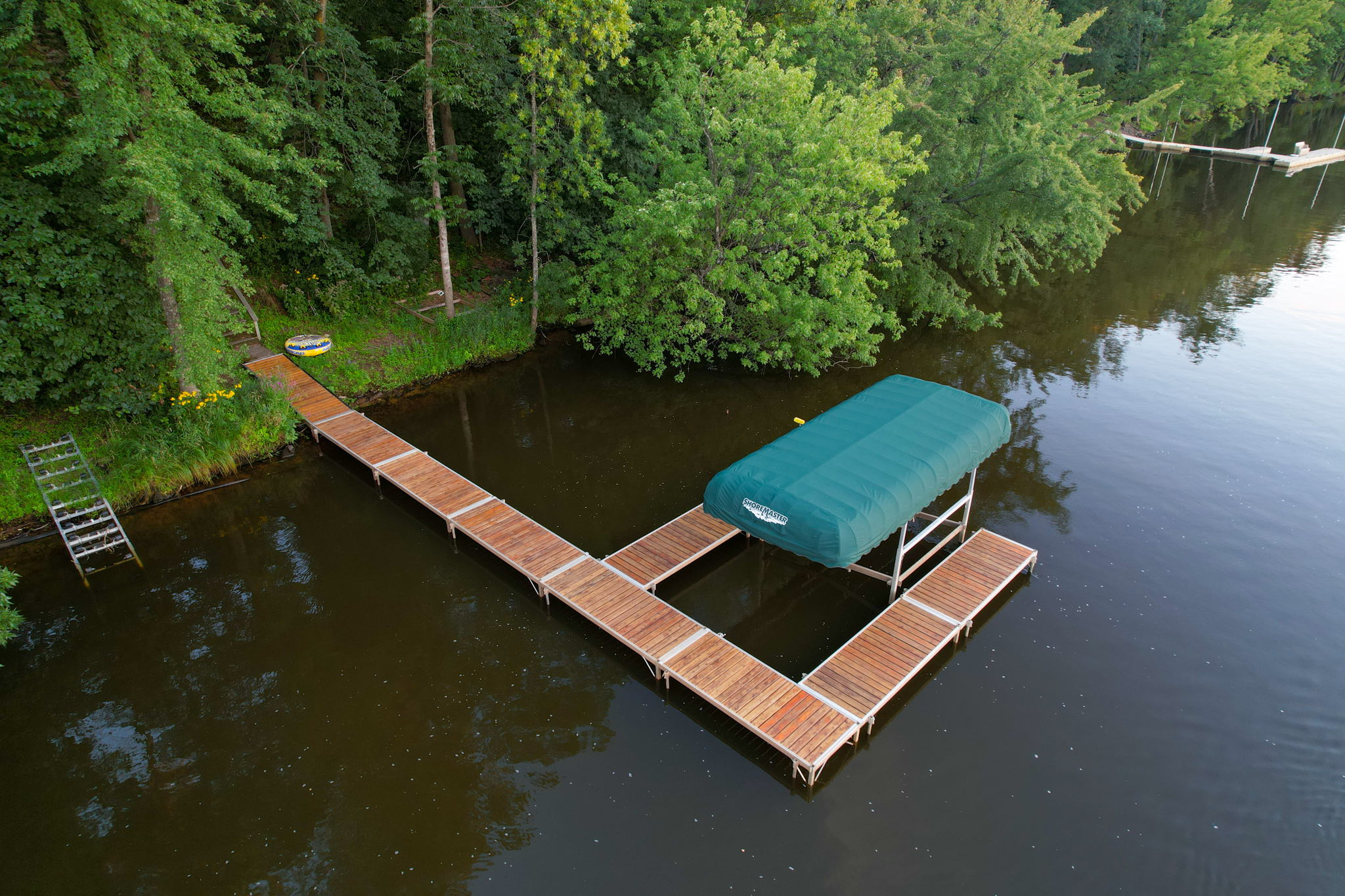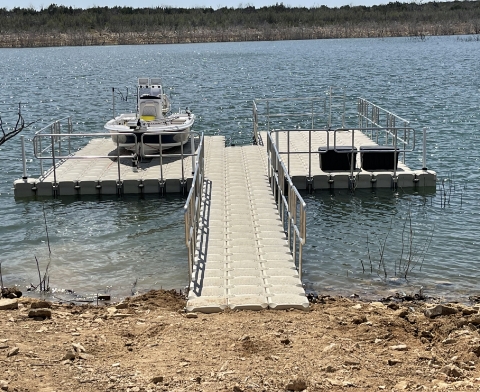Explore the Variety Of Floating Dock Providers Designed to Suit Every Boater's Requirements
Explore the Variety Of Floating Dock Providers Designed to Suit Every Boater's Requirements
Blog Article
Create the Perfect Docking Option With Floating Docks
Floating docks present a versatile option for a selection of maritime needs, adjusting effortlessly to changing water levels and diverse vessel kinds. Their modular nature enables for rapid installation and moving, yet the selection of ideal materials and style functions is crucial for guaranteeing both functionality and aesthetic appeal. As we discover the important elements that contribute to the efficiency of floating docks, a number of vital variables pertaining to stability and maintenance will certainly arise, increasing questions regarding exactly how to optimize your docking experience. The succeeding conversation will certainly light up these vital considerations.

Advantages of Floating Docks
Floating docks offer various advantages that make them an optimal selection for numerous maritime applications. Among the main advantages is their versatility to altering water levels. Unlike taken care of docks, floating docks fluctuate with the trend, making sure constant availability for vessels. This function is especially essential in areas prone to significant tidal fluctuations or seasonal water level adjustments.
Additionally, floating docks are generally easier and quicker to mount contrasted to conventional fixed frameworks. Their modular style enables uncomplicated setting up and disassembly, helping with upkeep and moving when needed. This flexibility is especially beneficial for momentary applications or in atmospheres where conditions might transform.
Floating docks additionally tend to be much more eco friendly, as they minimize disturbance to the seabed and surrounding marine ecological communities. Their buoyant nature lowers the danger of damage to aquatic life, promoting a much healthier environment. These docks can be personalized to accommodate numerous vessel sizes, ensuring that they satisfy particular operational needs.
Inevitably, the combination of versatility, convenience of installation, and ecological factors to consider makes floating docks a highly effective solution for a vast variety of maritime demands.
Choosing the Right Materials
Picking the appropriate products for floating docks is essential to ensure durability, stability, and sturdiness. The option of products straight affects the dock's performance in numerous ecological conditions, consisting of direct exposure to water, sunshine, and prospective wear from aquatic web traffic.
Usual products utilized for floating docks include aluminum, timber, and high-density polyethylene (HDPE) Light weight aluminum is lightweight, corrosion-resistant, and calls for very little maintenance, making it an outstanding choice for longevity. Nonetheless, its first cost can be higher compared to other materials.
Timber, while visually attractive and offering a traditional appearance, can be susceptible to rot and bug damages otherwise effectively treated. Therefore, making use of pressure-treated timber or naturally sturdy types like cedar or redwood can reduce these problems.
HDPE is a preferred choice because of its resistance to UV rays and chemicals, together with being eco-friendly. floating docks. It is offered and light-weight in numerous shades, enabling for modification
Inevitably, the right material selection will certainly depend on certain requirements, consisting of budget, preferred looks, and ecological factors to consider. Cautious evaluation of these aspects will certainly result in a resilient and effective floating dock remedy.
Layout Considerations for Security
When creating floating docks, making sure stability is an essential element that can significantly influence their functionality and security. Stability in floating dock layout is affected by numerous elements, consisting of buoyancy, weight distribution, and the arrangement of components. An optimum buoyancy system should make use of products that supply adequate lift while lessening weight. This balance makes certain that the dock continues to be above water, also under varying tons.
Weight circulation is crucial; uniformly dispersing loads throughout the dock protects against turning and boosts security. This can be accomplished via calculated positioning of docking tools, such as cleats and fenders, along with appropriate spacing of floats. Furthermore, the dimensions of the dock should be thoughtfully prepared. Wider layouts can supply enhanced security, specifically in this link rough water conditions, while longer docks might require added supports to avoid drooping.
Another vital consideration is the environmental influence, consisting of wave action and wind. Including attributes such as sidewalls or skirting can assist mitigate the effects of environmental forces, maintaining stability in damaging conditions. Ultimately, a combination of thoughtful layout, material selection, and understanding of ecological variables will certainly produce a floating dock that fulfills both stability and security demands.
Setup Tips and Strategies

Next, protect the needed permits and follow regional laws, which may dictate installation techniques and ecological considerations. If required, engage a certified contractor experienced in floating dock setups. Use top notch materials created for marine settings to improve resilience and longevity.
When positioning the dock, straighten it alongside the coastline to assist in easy gain access article to. Guarantee that the anchoring system is durable, using concrete blocks or helical anchors to maintain the dock against wind and wave activity. It's crucial to make up seasonal water degree fluctuations, consisting of prospective ice movement in chillier climates.
Throughout the installation, ascertain the dock's floatation and stability prior to finalizing the anchoring. On a regular basis examine the installment for any type of signs of wear or damage. By following these ideas and techniques, you can attain a safe, functional, and visually pleasing floating dock setup that meets your demands.
Upkeep and Treatment Standards
Maintaining and caring for floating docks is essential to extending their life-span and ensuring safe usage. Routine examinations should be performed to determine any kind of indicators of wear, damages, or aquatic growth. Try to find fractures, loosened installations, or blemished locations on the dock's surface area, as these more tips here concerns can jeopardize structural honesty.
Cleaning is necessary. Make use of a stress washer to eliminate algae, barnacles, and particles, which can build up with time. For stubborn growth, think about ecologically pleasant cleaner that will not damage water life.
Additionally, examine the mooring lines and anchors regularly to ensure they are complimentary and secure from corrosion. Replace any kind of frayed or damaged lines quickly to maintain security.
During extreme climate, such as tornados or freezing conditions, take preventive steps. Secure the dock with added mooring lines and, if feasible, get rid of any kind of removable components to stop damage.
Final Thought
In verdict, the application of floating docks offers a reliable and versatile docking remedy ideal for different maritime applications. Their flexibility to rising and fall water levels, integrated with a modular layout, permits very easy personalization and moving. Picking suitable materials improves both toughness and aesthetic appeal, while careful factor to consider of stability makes certain security and durability. With proper installation and regular maintenance, floating docks can give reliable and reliable docking experiences for a vast array of vessels.
As we discover the crucial components that add to the efficiency of floating docks, numerous key elements pertaining to stability and upkeep will certainly emerge, raising questions concerning how to optimize your docking experience. Unlike repaired docks, floating docks increase and fall with the trend, making sure consistent ease of access for vessels.When creating floating docks, making certain security is an essential aspect that can considerably affect their capability and security. Stability in floating dock layout is influenced by various aspects, including buoyancy, weight distribution, and the plan of parts. Inevitably, a combination of thoughtful style, product choice, and understanding of environmental variables will generate a floating dock that satisfies both stability and safety and security requirements.
Report this page